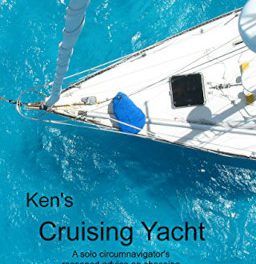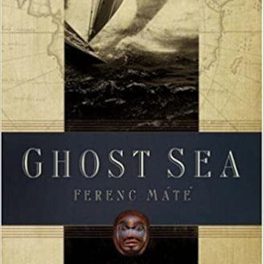
The legacy of Kettenburg Boat Works can be seen in the sheer number of wooden vessels still plying the Pacific Ocean. It’s a story of the last of the “amateur” yacht designers, builders, and racers to gain a following based on the quality of their work alone, rather than on an academic pedigree. They were sailors first, designers after.
The San Diego-based company started in 1919, at about as grass roots as one could get, lowering hand-made boats into the swampy waters off Shelter Island on roughly hewn wheels and ways. They had to wait for high tide to lift their larger creations out of the mud.
The San Diego Maritime Museum, in conjunction with Mystic Seaport Museum, has produced a vivid coffee-table book that captures the legacy of the Kettenburg family, their boats, and what made them so special.
“Initially, building the Kettenburg boats provided the basis for a family business,” said Raymond Ashley, director of the San Diego Maritime Museum. “Ultimately, it provided a kind of maritime immortality, a deepening patina of legend that has followed the boats themselves as they sail across the decades and generations.”
Ashley pointed out that the Kettenburg PC was the first popular class of ocean-sailing boat in Southern California that people of ordinary means could aspire to own. Today, there are dozens of them still afloat and racing. The PC Fleet is extremely active (and inexplicably competitive) on a weekly basis in San Diego.
The Kettenburgs created a name people could trust and a boat you knew would not fail you. They were known for their integrity and their appreciation of both the people building, and the people buying, their boats. A plaque hung in Paul Kettenburg’s office heralded two simple words: “People Matter.”
From high-speed vee-bottom rumrunners of the 1920s to the Pacific Class (PC) sailboats of the 1930s; from government fishing boats and plane-rearming contracts during World War II to the classic Pacific Cruising Class (PCC) after the war, the Kettenburg boats left their mark on the world of boating.
The book is 224 pages of well-researched information on the Kettenburgs and their product, carefully prepared by historian Mark Allen. Among the chapters inside are “Early Ideas and Designs,” “Rumrunners,” “Birth of the PC,” “Greyhounds of the Sea,” “Wartime Competition,” and “The Kettenburg People.”
Paul and George Kettenburg have passed on, but the Kettenburg family fully cooperated to bring this graphic and insightful book to completion, sharing photographs that had never been seen by the public.
The photographs alone are spectacular. Combine this with the well-researched history and lively anecdotes concerning the Kettenburgs and their boats and you have a book that you’ll be proud to set out for others to see. No dusty bookshelves for this quality volume.
Building Kettenburgs by Mark Allen (Mystic Seaport Museum and the San Diego Maritime Museum, 2008; 224 Pages)




